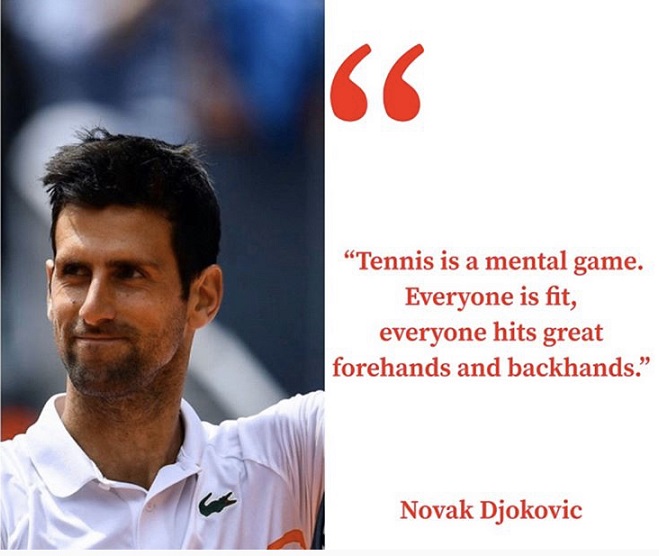- Located in Fairfax, Virginia: demo racquet rental shop: AlpineSkiShop.com/demo-rackets-and-stringing
- Online: Use Tennis Warehouse's Demo Program to rent racquets [have the rental fee then accredited to the full price of the racquet once ready to buy]: Tennis-Warehouse.com/demoprogram.html
➧ Roger Federer's racquet and equipment [Wilson]➧ Novak Djokovic's racquet and equipment [Head]➧ Rafael Nadal's racquet and equipment [Babolat]
Weight
Light racquets can be easy to maneuver but don’t give as much power, whereas heavier racquets can be more powerful but tougher to wield.
- Lighter Racquet = More Control.
- Heavier Racquet = More Power.
Head size
A larger head-sized racquet give you a bigger surface area to hit and often more power, so are more forgiving for less experienced players. Smaller heads can give more control but can be more difficult to play with and offer less spin potential.
- Larger Headsize = More Power.
- Smaller Headsize = More Control.
Grip size
The grip size refers to the circumference of the grip and is usually measured in inches. A rough way of checking if a grip size is right for you is by holding a racquet in your normal forehand grip. If the racquet is of the correct grip size, the gap between your palm and longest finger should approximately be the width of a finger. If the gap is too small it means you will need a larger grip size, and if the gap is too big you will need a smaller grip size.
Polyester strings tend to be the stiffest and lowest-powered type of string, but they do offer the most control, spin and durability. This is why they are ideal for players with longer, faster strokes that can generate much of their own power. Players with slower strokes or looking for more power may find "polys" too stiff and uncomfortable.
Natural gut strings are generally the softest tennis string available, making them the most powerful and comfortable option out there. However, what makes natural gut very unique is the softness that it exhibits at very high tensions. If you are looking for more control out of your natural gut, you can string it at a very high tension (60+ lbs) and it still retains its comfort, playability and feel.
Multifilament strings tend to be quite soft as well since they are designed to replicate the feel and performance of natural gut. However, they don't have the same level of playability at higher tensions like natural gut does. However, they are still a great option for players looking for power, comfort and feel at a more reasonable price point.
Synthetic gut strings are usually right in the middle of the road when it comes to stiffness, which is why they usually are good choice for affordable all-around performance.
[Guide] How to Choose the Perfect Racquet String: https://klipperusa.com/pages/how-to-choose-the-perfect-racquet-string
